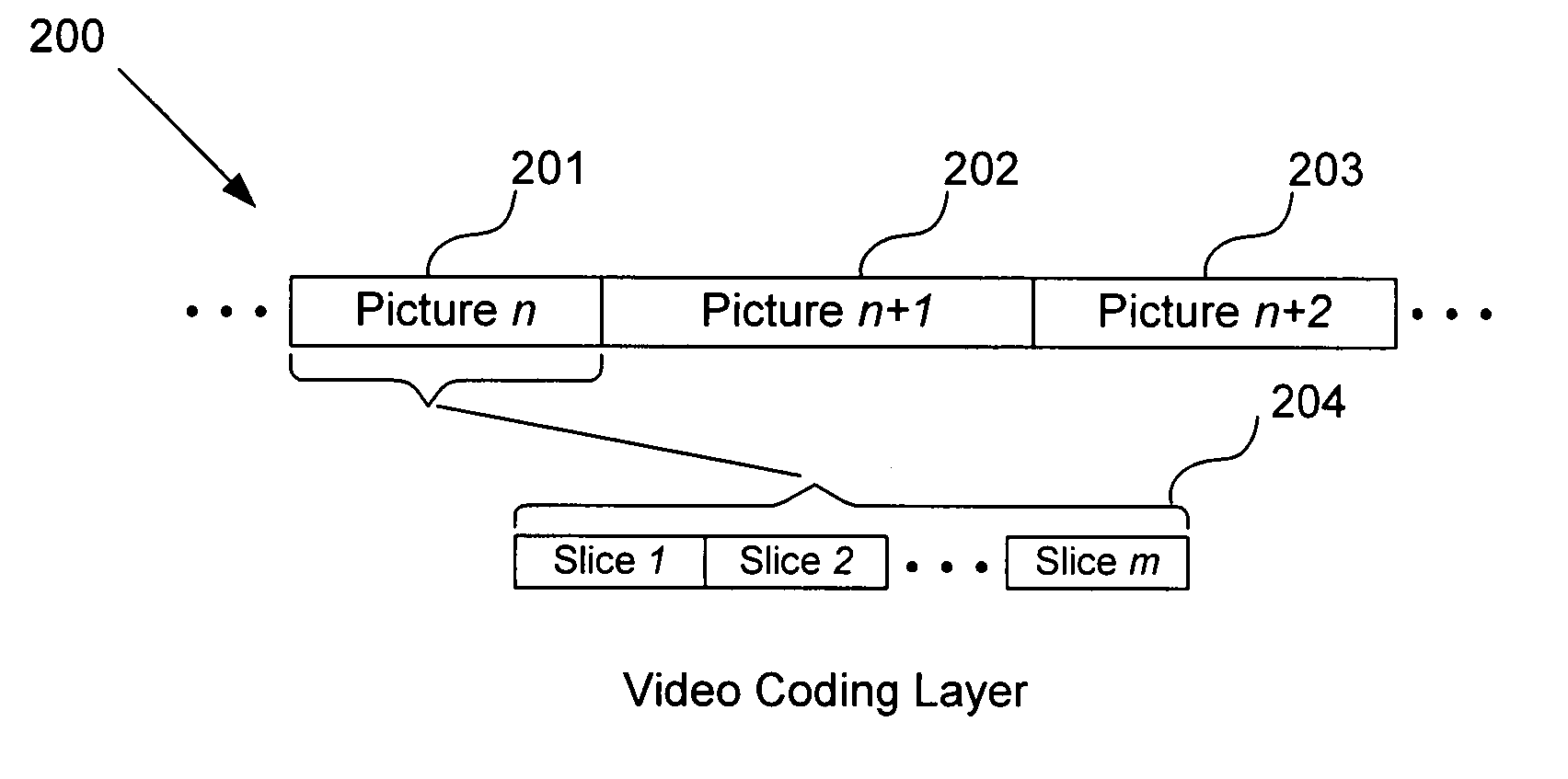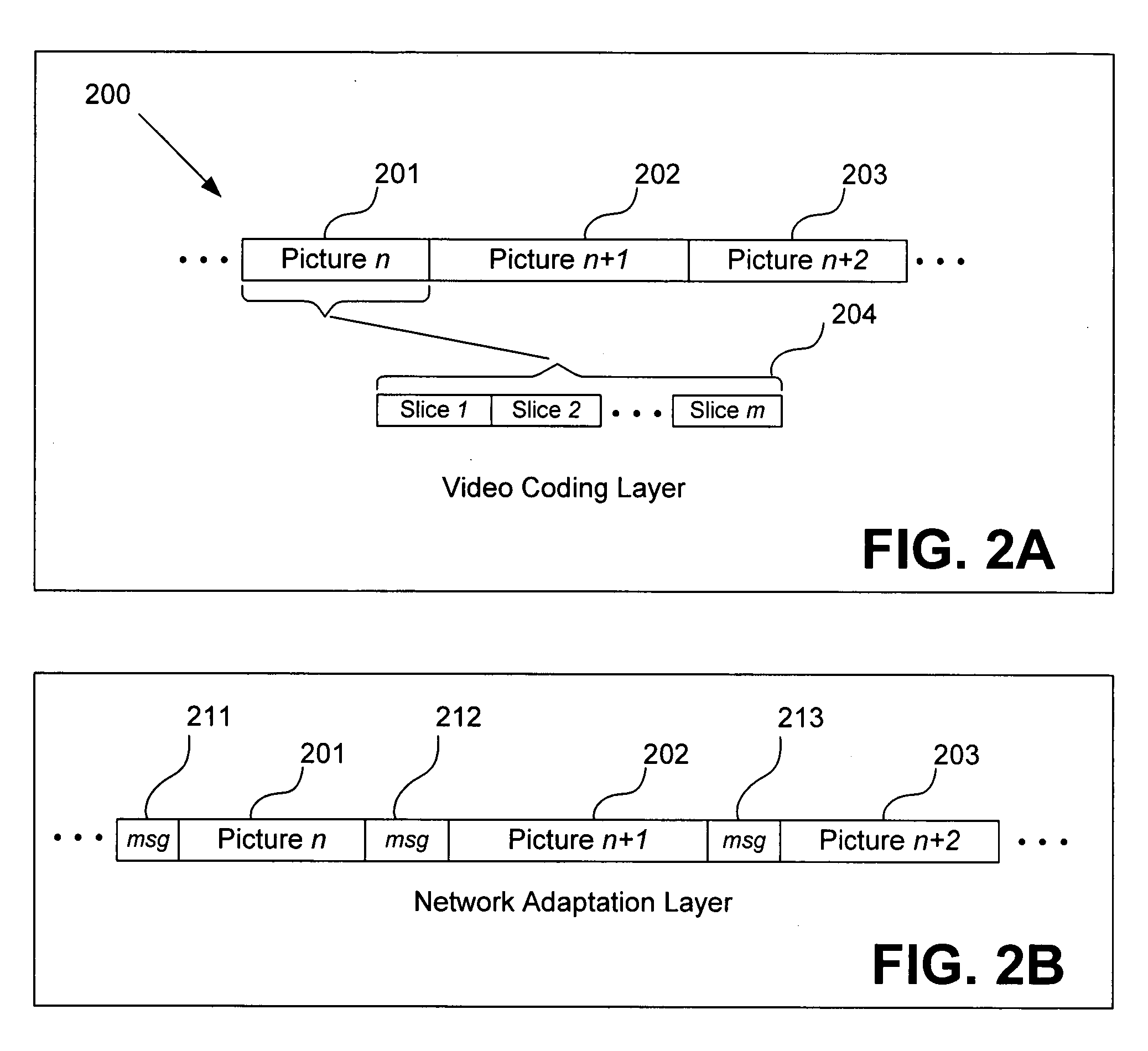Hypothetical reference decoder for compressed image and video
a compression and image technology, applied in the field of image and video signals, can solve the problems of inability to determine the initial bit rate, the difficulty of a system designed to display pictures with precise timing, and the inability to encode or compress images
- Summary
- Abstract
- Description
- Claims
- Application Information
AI Technical Summary
Problems solved by technology
Method used
Image
Examples
Embodiment Construction
and Advantages of the HRD
[0108] As discussed above, in one aspect of the present invention, a pre-decoder buffer removal time delay is transmitted for each picture, which is represented by the syntax elements pdrd_xxx in the buffering period SEI message and pre_dec_removal_delay[n] in the picture layer. In conventional hypothetical reference decoders, the removal time for removing a picture from the pre-decoder buffer is either the earliest possible time that the picture can be removed or is calculated based on a fixed frame rate--with a rule to handle one specific exception from fixed frame rate in the case of the MPEG-2 standard. However, according to one embodiment of the present invention, each picture is removed from the pre-decoder buffer at a time calculated by adding the pre-decoder buffer delay (which is transmitted for each picture) to the removal time of the previous picture.
[0109] Accordingly, HRD of the present invention can handle variable frame rate video arising from...
PUM
 Login to View More
Login to View More Abstract
Description
Claims
Application Information
 Login to View More
Login to View More - R&D
- Intellectual Property
- Life Sciences
- Materials
- Tech Scout
- Unparalleled Data Quality
- Higher Quality Content
- 60% Fewer Hallucinations
Browse by: Latest US Patents, China's latest patents, Technical Efficacy Thesaurus, Application Domain, Technology Topic, Popular Technical Reports.
© 2025 PatSnap. All rights reserved.Legal|Privacy policy|Modern Slavery Act Transparency Statement|Sitemap|About US| Contact US: help@patsnap.com



